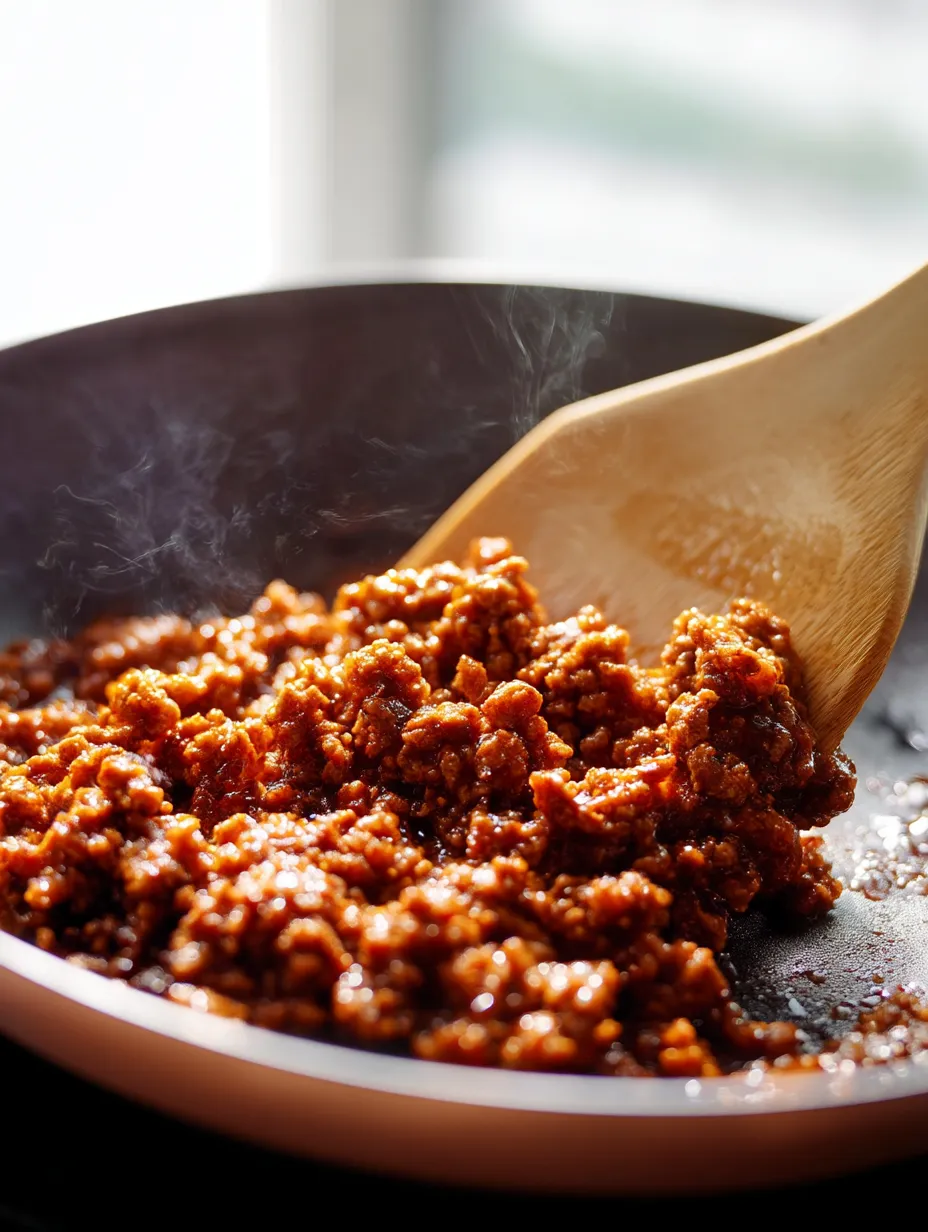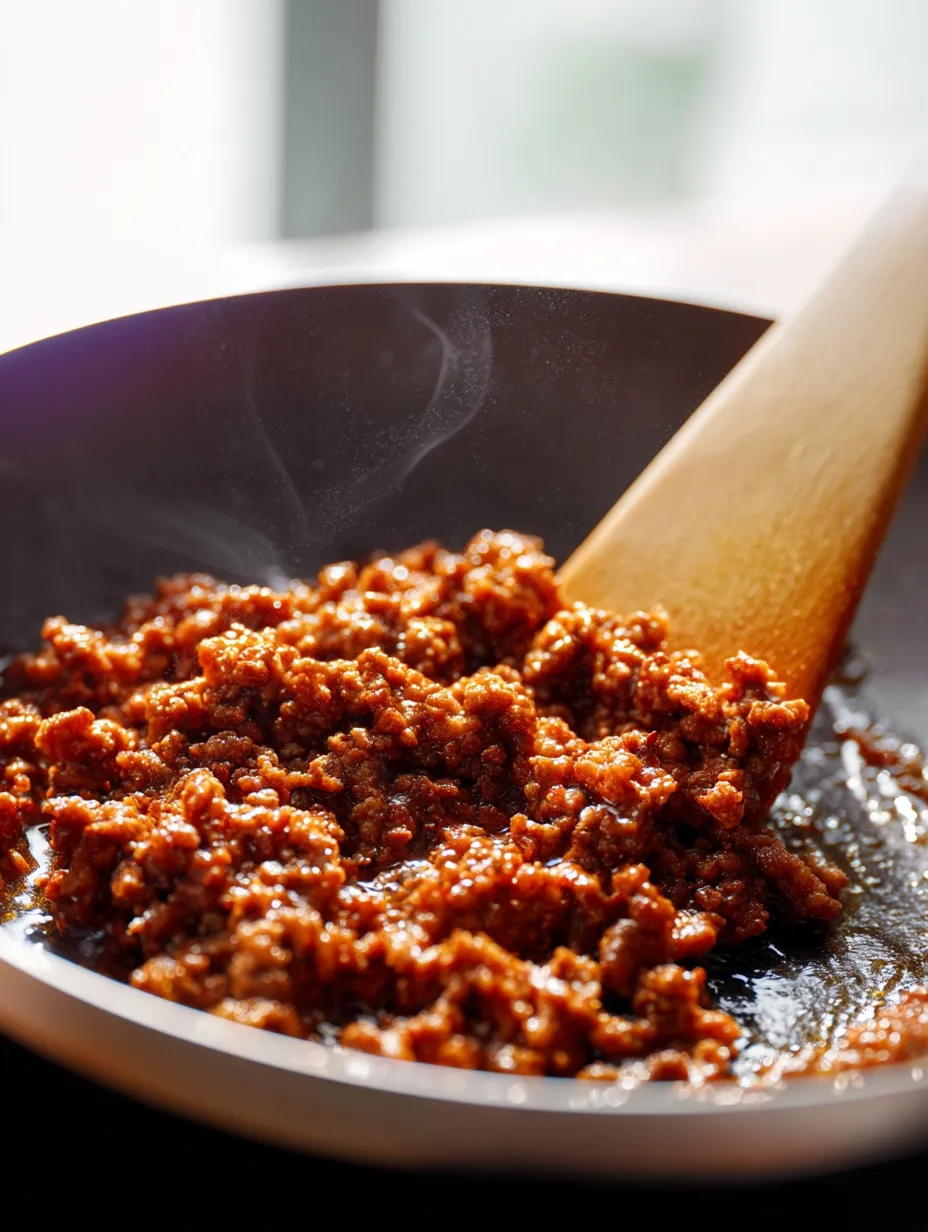 Pin it
Pin it
This rich nikumiso has completely transformed my weeknight cooking, bringing authentic Japanese flavors to everything from simple rice bowls to complex noodle dishes. The savory-sweet miso pork combination creates an irresistible umami bomb that elevates even the most basic ingredients.
I first made this recipe when trying to recreate my favorite izakaya flavors at home. Now it's become my secret weapon when I need to transform simple ingredients into something special that impresses dinner guests.
Ingredients
- Vegetable oil: Creates the foundation for sautéing your aromatics without overpowering the dish
- Garlic and ginger: Form the aromatic base every great Japanese dish needs
- Pork mince: Provides the perfect meaty texture while absorbing all the incredible flavors
- Water: Helps create the perfect sauce consistency
- Sugar: Balances the saltiness of the miso with necessary sweetness
- Red miso paste: Delivers deep umami flavor that makes this dish special; look for authentic Japanese brands
- Soy sauce: Adds complexity and saltiness; use Japanese varieties if possible
- Cooking sake: Tenderizes the meat and adds subtle complexity; opt for a decent quality one
- Sesame oil: Gives that distinctive nutty finish that elevates the entire dish
- Spring onions (optional): Add freshness and color as a garnish
- Doubanjiang (optional): Adds wonderful spice if you enjoy heat
Step-by-Step Instructions
- Sauté the aromatics:
- Heat vegetable oil in a large frying pan over high heat then add garlic and ginger. Fry for just 20-30 seconds until fragrant but not browned. This brief cooking releases their essential oils without burning which would create bitterness.
- Brown the pork:
- Add pork mince to the pan and fry until properly browned about 3 minutes. Break up any clumps with your spatula for even cooking. The browning process creates important flavor compounds through the Maillard reaction so do not rush this step.
- Create the sauce:
- Reduce heat to medium-low and pour in water, sugar, miso paste, soy sauce, cooking sake, and sesame oil. If adding doubanjiang for spice, incorporate it now. The lower heat prevents the sugars from burning while allowing the flavors to meld together.
- Reduce and thicken:
- Stir continuously and cook for another minute or so until the sauce coats the back of a spoon. The mixture should become glossy and slightly sticky rather than watery. This consistency is perfect for clinging to rice or noodles.
 Pin it
Pin it
Red miso is the star ingredient in this recipe. I was initially tempted to substitute with white miso which I had on hand but the deeper fermented flavor of red miso creates that authentic rich taste that keeps me coming back to this recipe again and again. My husband now requests this weekly over plain steamed rice with a side of simple greens.
Storage Solutions
Nikumiso is incredibly convenient for meal planning. Store it in airtight containers in the refrigerator where it will maintain its quality for 2-3 days. The flavors actually continue to develop overnight making leftovers sometimes even better than the fresh version. For longer storage freeze portions in small containers or ice cube trays to defrost only what you need. The frozen nikumiso maintains its quality remarkably well with no noticeable texture changes upon reheating.
Serving Suggestions
The versatility of nikumiso is truly remarkable. Serve it traditionally over steamed white rice for a simple meal or elevate your ramen by adding a spoonful on top. For a light lunch wrap it in lettuce leaves with sliced cucumber and a drizzle of Kewpie mayonnaise. One of my favorite applications is nikumiso dengaku where eggplant halves are roasted then topped with the savory pork mixture and briefly broiled. For an impressive yet simple appetizer serve small portions over cubes of cold silken tofu topped with sliced green onions and a sprinkle of toasted sesame seeds.
 Pin it
Pin it
Recipe Variations
While pork is traditional you can easily adapt this recipe to other ground meats. Turkey creates a lighter version while beef adds richness. For a vegetarian alternative crumbled firm tofu or tempeh works surprisingly well by absorbing the flavorful sauce. Consider adding finely diced vegetables like carrots, mushrooms, or bell peppers to increase nutrition and stretch the recipe further. The sweetness can be adjusted according to preference using honey instead of sugar creates a more complex flavor profile. For those who enjoy heat beyond doubanjiang try adding a teaspoon of gochujang or a sprinkle of shichimi togarashi at the end.
Frequently Asked Questions
- → What dishes pair well with Nikumiso?
Nikumiso pairs well with rice, ramen, udon, tofu, or as a filling for onigiri and wraps. It's also great for bento boxes or as a stuffed filling for eggplant.
- → Can Nikumiso be made spicy?
Yes, you can add doubanjiang chili paste for a spicy kick. Adjust the quantity based on your spice preference.
- → How do I store leftover Nikumiso?
Store it in an airtight container in the fridge for 2-3 days or freeze for up to a month. You can also freeze it in portion sizes for convenience.
- → What are some garnishing ideas for Nikumiso?
Garnish with thinly sliced green onions or a drizzle of sesame oil for added flavor and freshness.
- → Can I use a substitute for pork mince?
Yes, you can use chicken, turkey, or even tofu mince as an alternative to pork mince.
